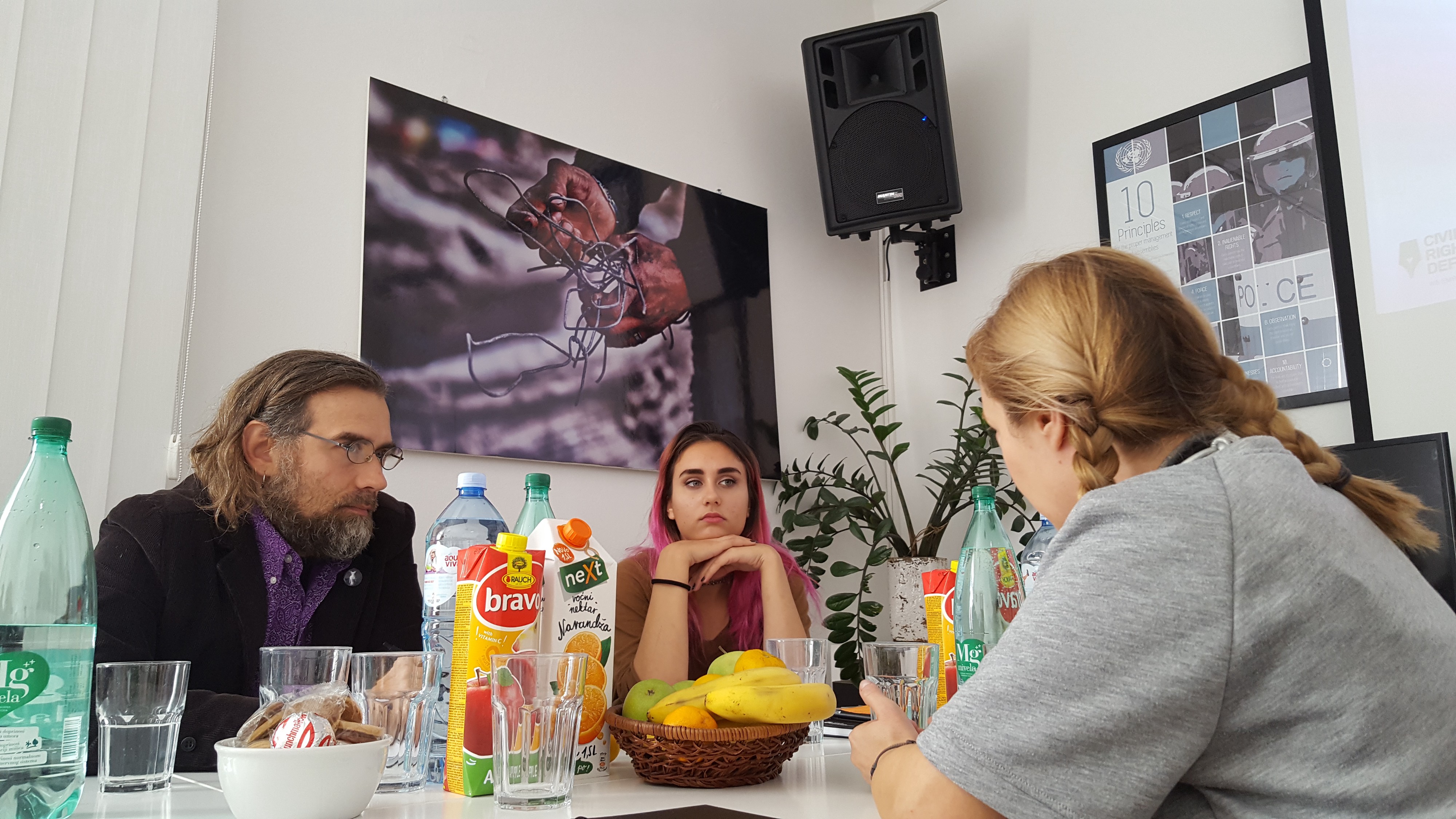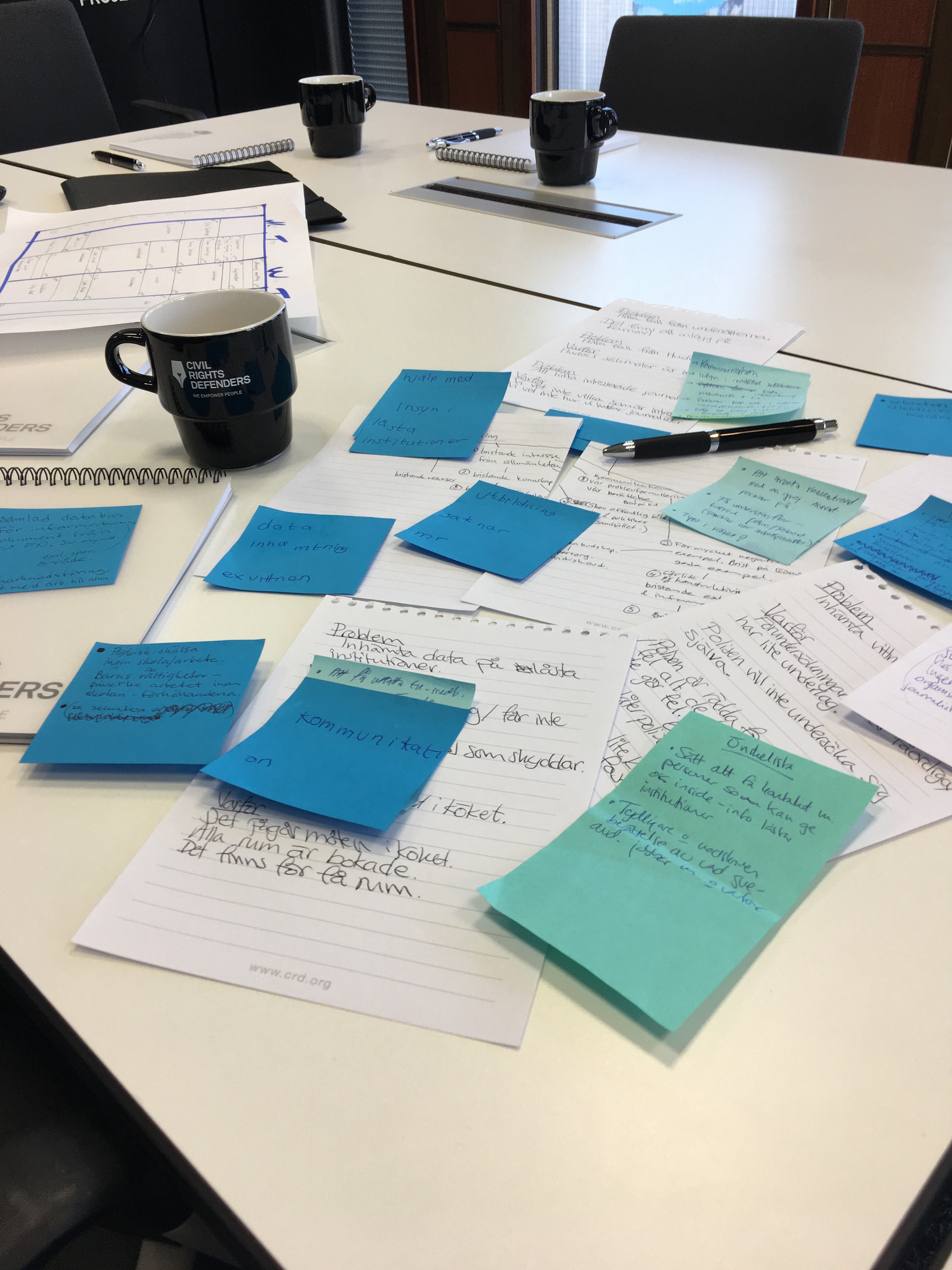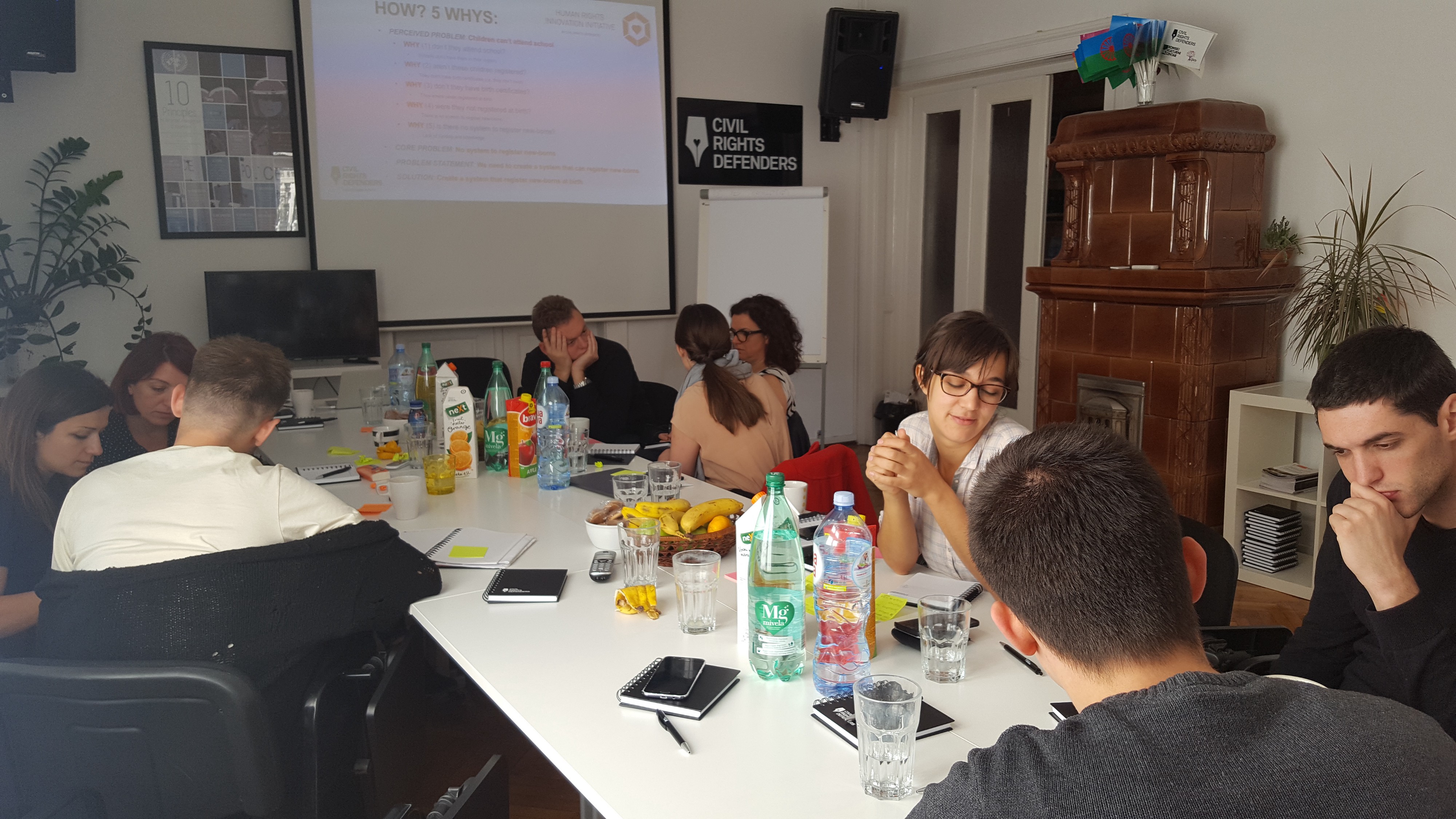How We Conduct Our Innovation Workshops

Problems are seldom something people strive to seek out, yet they find us. If one does not acknowledge them, they can feel overwhelming. This is why the Human Rights Innovation Initiative attacks them head on, to find them, define them and get ownership to enable change. The underlying idea is to foster an innovative mindset within Civil Rights Defenders, enhancing routine work to improve human rights defenders’ security and increase their impact. The ambition is to disrupt the traditional human rights space with key innovations.
Our approach is defender-centric, meaning we put human rights defenders in the centre of ideas and projects being developed. An important part of that process is having co-workers reach out to us with issues they are faced with. It may be an issue relating to their own work or an issue facing partners they are in contact with. Although most usually appreciate a chance to share their problems, it is a bit more difficult to do it in a productive and constructive way. Is an issue simply a symptom of something else? Is it possible to solve, and worth turning into a project?
The Innovation Initiative’s mission is to help our co-workers identify problems and start a search for applicable solutions. One method in our toolbox is to host a workshop. Here coworkers and fellow human rights defenders discuss techniques for problem identification, a method which supports communication and reflection. We have hosted several innovation workshops, including one last week, where we welcomed colleagues from our Legal department at the Stockholm Office to participate. Due to the positive experience we thought we would share our format for how such a workshop can be conducted.
Step 1: Introduction
We begin by introducing the basic goals of the Innovation Initiative, and how they relate to our participants. Innovating for Civil Rights Defenders partners also include improving internal work processes. For example, analysing and innovating around such a common thing as grant application procedures is also on our table, because in the end it will have a positive effect on our own and our partners activities. The introduction part is all about what the workshop will include, and why participants should devote their time and energy to it.

Photo by: Beatrice Liliegren
Step 2: Brainstorming problems and opportunities
Then the more interactive part of the workshop begins. All of our participants are asked to write down one to three problems facing them in their work. These are usually unique to every group of participants, and in the case of the legal department, the problems revolved around their role as legal advisors or related to issues facing their clients. After gathering up problems, the workshop takes on a bit of a more positive note when the participants are asked to scribble down opportunities. Opportunities are not issues hindering one’s progress, rather it is paths yet unexplored, and methods one wishes to implement.
Step 3: Deciphering root problems
Having several issues on hand, the group is divided into smaller discussion groups. They are asked to break down their problems further using the “why”-method. Choose one of the problems brainstormed before, and pose the question “why” up to five times. The goal is to identify the root of the problem, thus increasing the likelihood that consecutive attempts at solving it will be successful.

Workshop with Civil Rights Defenders Europe Office, Belgrade Serbia. Photo by: Mathias Antonsson
The “why”-method is easy enough in theory, but as one starts to break down a problem into fragments one will notice how a problem can adhere from multiple sources. Having more than one pair of eyes provides new angles and perspectives, revealing parts of a problem one has not thought of before. Moreover, investigating each lead might mean ending up with several root causes. Be sure to set enough time aside for this exercise, since the end goal is not just to deliver finished root problems; it is just as important for the participants to explore the method and communicate extensively with each other. Furthermore, understanding the the root problems usually creates ownership of the problem, it is no longer abstract and as such hopefully less frustrating. It is also the starting point to a potential solution.
When we have more time dedicated to the workshop, we also perform a gap analysis, essentially studying what we have been doing and how it can be improved. This exercise relates more closely to finding opportunities, but can equally reveal problems and bottlenecks.
Step 4: Big group discussion and feedback
Coming full circle, gather together all the participants and share findings. This is of course an equally good time to bring up questions and discoveries made during the exercise. It is an opportunity to tie up loose ends, as well as for receiving concluding feedback from the participants on the workshop as a whole. At the very end, gather all notes, to review and follow up on.
Step 5: Discuss potential solutions
Quite often the problem owner is also able to come up with potential solutions. Thus brainstorming together increases the chances that we can find a fix. Then it’s a question if available resources (staff, time and budget) allows for implementation. At times you can get stuck, then one can share the issue with an extended group, host a hackathon or similar to try to find a potential solution. Staying defender-centric, it is important to include the problem owner in these endeavours, making sure the proposed solution is relevant and understood so that it can be used in the future.
It was really interesting and instructive to watch the legal department at work, as in previous workshops they were all positive, offering up suggestions and sharing constructive feedback amongst each other. Overall, the workshop was viewed as a great way to reflect on the ongoing work in the department. A chance to look up from the track one has been on, to retrieve one’s steps, but also, as one of our colleagues put it, “to dig where one is standing”. Another participant remarked on a creative element, phrasing it as “ideas blossoming”. It was a chance to get new perspectives and entries into the ongoing work in the department, sharing concerns and different viewpoints. There was widespread appreciation for the “why”-method, even though it had proven difficult to perform. They suggested taking the technique further, using it to break down human rights issues to later reconstruct them more pedagogically when presenting cases. Finally, it also adds an element of team building. Both in the sense of group work, but also by understanding each others challenges. It can explain why your colleague is frustrated, or not performing as fast as you might expect, and by discussing this you create a mutual understanding and ownership.
This was our fifth innovation workshop. We are constantly learning and improving them. If you have any feedback, please share it. In the near future we will follow-up on the problems discussed and seize opportunities for improvement. Until then, our next workshops will be conducted during Defenders’ Days, which is Civil Rights Defenders global conference for human rights defenders. We will brainstorm around issues the visiting human rights defenders bring with them, and consult with experts in the field of innovation. Who knows, maybe the next Natalia Project will be conceived? Stay tuned.


